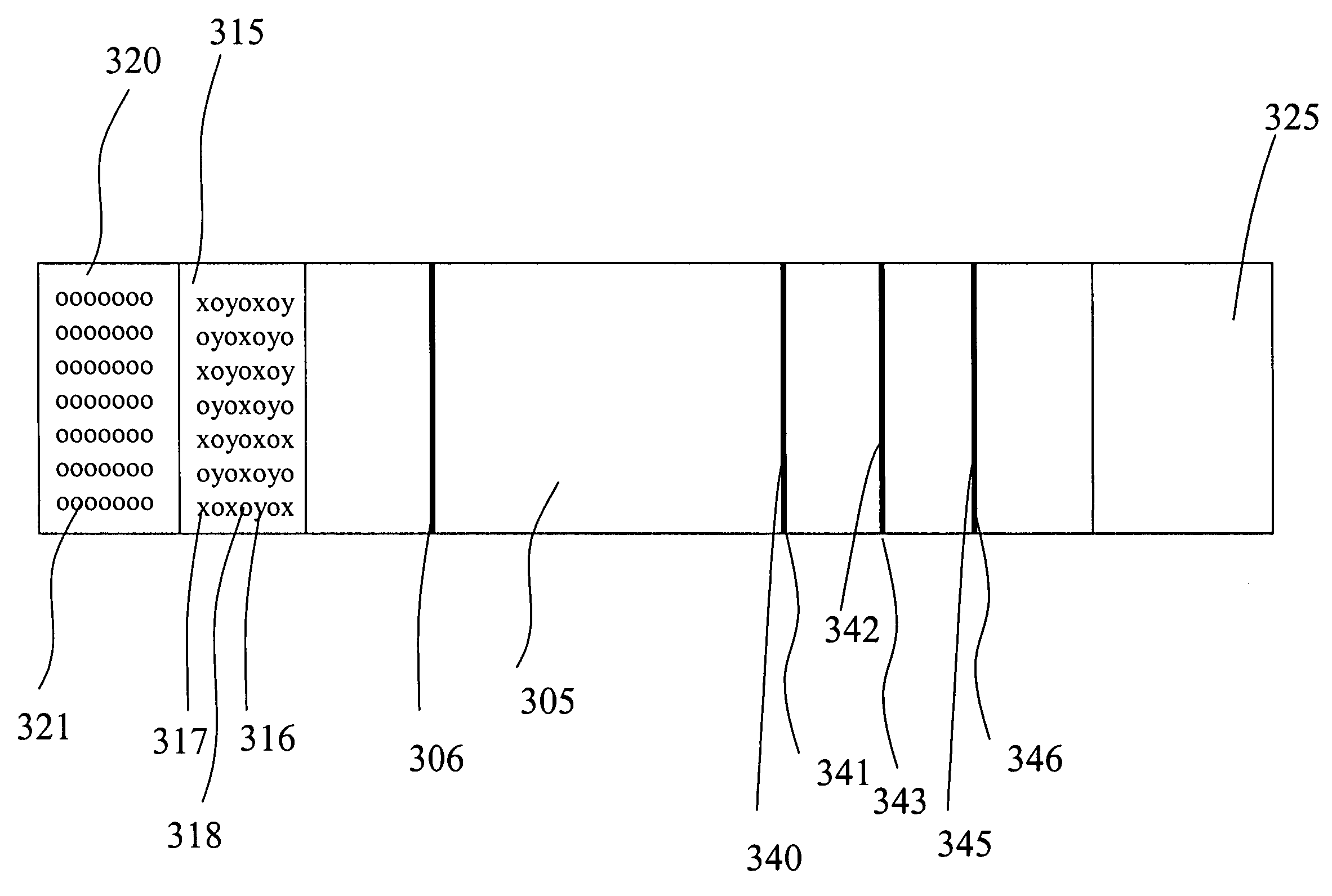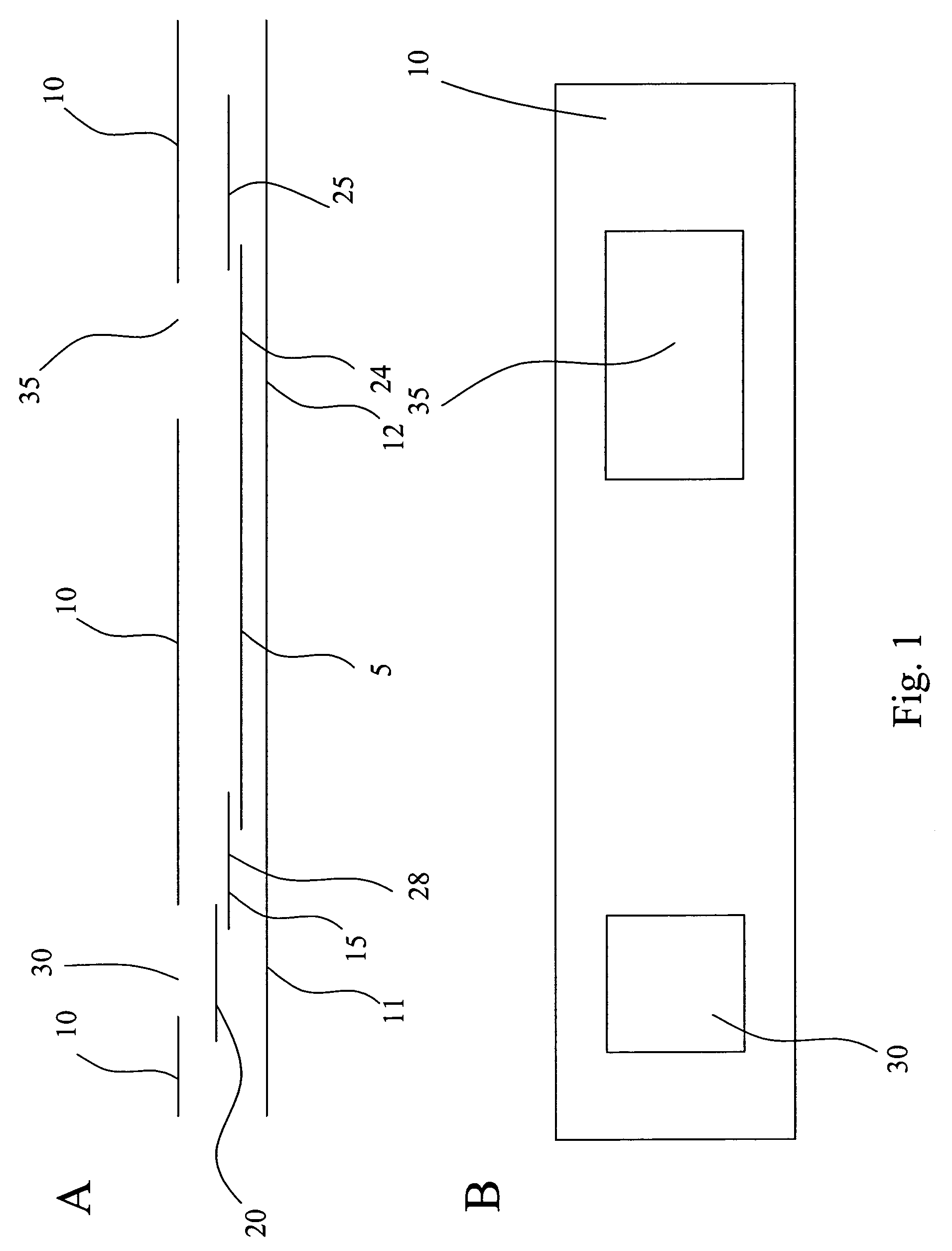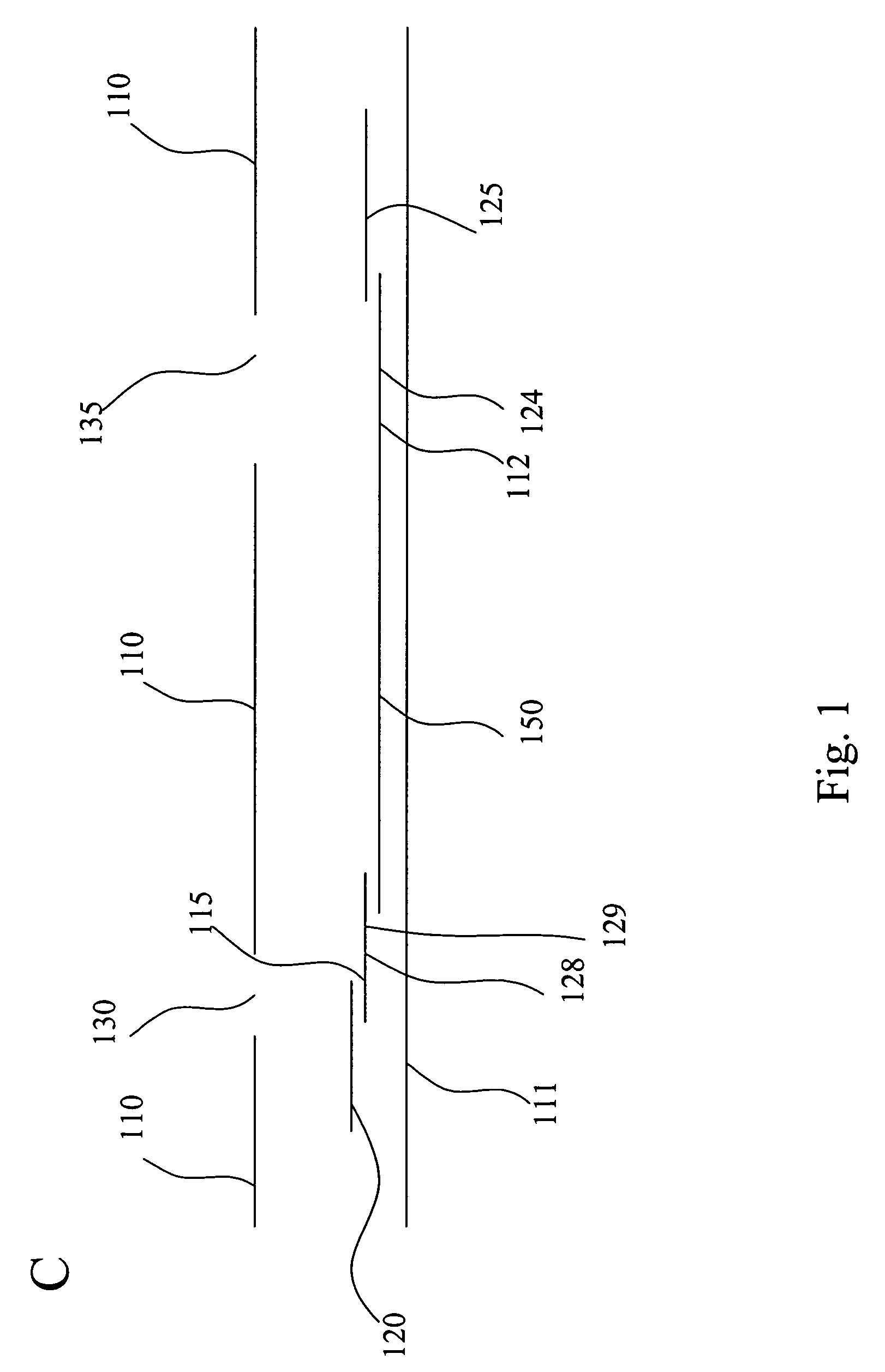Diagnostic assay device
- Summary
- Abstract
- Description
- Claims
- Application Information
AI Technical Summary
Benefits of technology
Problems solved by technology
Method used
Image
Examples
example 1
Influenza Test Device
[0117]When testing for the presence of Influenza A and / or B, some subjects have a known tendency to produce the false positive result, especially under “stress conditions,” i.e., “stress conditions” refers to extracting multiple negative samples in the same solution to produce a very concentrated solution of the interfering substance. The interfering substance is presumed to have the ability to bind mouse monoclonal antibodies so that a monoclonal conjugated to colloidal gold can interact with the analyte of interest and the first monoclonal antibody test line link together to give the appearance of a positive result. A “control line” is positioned after the test line with regard to the flow path of the sample through the various zones. The control line uses an “anti-mouse” to capture mobile labeling reagent that had not bound to the capture reagent. Mouse IgG competes with the conjugated antibody for binding and the net result is a reduction in control line sig...
example 2
Urine Testing:
[0120]Samples from 158 women of child-bearing age were collected and evaluated within 72 hours of collection. Testing of these samples with the assay device produced according to the invention produced the expected result. The presence of the immobilization zone did not interfere with the assay result.
Serum Testing:
[0121]Two-hundred characterized serum samples were evaluated, eleven of which produced false positive results with a different assay device that did not have the interfering agent immobilization zone. None of the eleven samples produced a false positive result when assayed with an assay device according to the invention.
[0122]Heterophilic antibodies (IgM and IgG mediated) are known to produce false positive results in immunometric assays. To combat the false positive results in an hCG assay for urine, serum, or blood, an IgG blocking agent was immobilized on a membrane as an interfering agent immobilization zone to remove the heterophilic antibodies from the...
PUM
| Property | Measurement | Unit |
|---|---|---|
| volumes | aaaaa | aaaaa |
| pore size | aaaaa | aaaaa |
| pore size | aaaaa | aaaaa |
Abstract
Description
Claims
Application Information
 Login to View More
Login to View More - R&D
- Intellectual Property
- Life Sciences
- Materials
- Tech Scout
- Unparalleled Data Quality
- Higher Quality Content
- 60% Fewer Hallucinations
Browse by: Latest US Patents, China's latest patents, Technical Efficacy Thesaurus, Application Domain, Technology Topic, Popular Technical Reports.
© 2025 PatSnap. All rights reserved.Legal|Privacy policy|Modern Slavery Act Transparency Statement|Sitemap|About US| Contact US: help@patsnap.com



